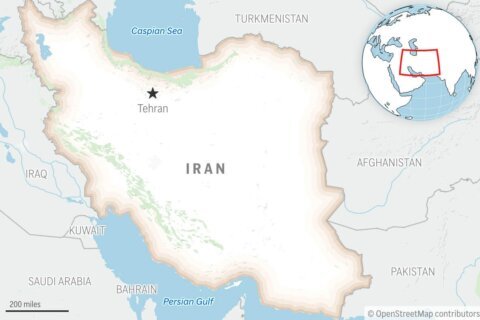Exchange-traded funds, or ETFs, streamline investing and make a diverse portfolio more accessible to everyone. You don’t have to meticulously analyze stocks and market trends on a daily basis to generate enticing long-term returns. Fund managers do the work for you with various ETFs, and some of those funds are quite cheap.
Fidelity ETFs are known for their low expense ratios and high average annual returns. Some of Fidelity’s top funds have expense ratios below 0.2%. That means for each $10,000 you put into these ETFs, you only have to pay $20 per year or less in fees. As a result, you can end up with better returns.
[Sign up for stock news with our Invested newsletter.]
Investing in ETFs offers several benefits that you may not get from constructing your own portfolio. Cristian Mundy, a certified financial planner and senior wealth manager at LifeLine Financial & Wealth Management Group, explains the advantages of ETFs like those that Fidelity offers. “Buying ETFs provides a high level of diversification, providing a broad range of asset exposure in specific sectors or indexes under a single investment. ETFs tend to have lower management fees and internal costs as compared to mutual funds, allowing for more compounded interest over time.”
Typically, there are no investment minimums, other than the share price, required to get started with ETFs, making them easily accessible. “ETFs trade through the trading day, therefore you can have a higher level of liquidity during market hours and transparency throughout,” Mundy explains.
Fidelity has offered ETFs since 2003 and now has dozens of them in a wide range of sectors and industries. You can find low-volatility ETFs that focus on fixed income as well as those that focus on high-yield dividend stocks. However, if you want to increase your returns, Fidelity’s growth ETFs offer exposure to companies that post impressive revenue and earnings growth.
If you want to grow your portfolio while paying low fees, consider these top Fidelity ETFs for the long run:
| Fidelity ETF | Expense Ratio | Assets |
| Fidelity Blue Chip Growth ETF (ticker: FBCG) | 0.59% | $5.2 billion |
| Fidelity Disruptive Technology ETF (FDTX) | 0.50% | $193 million |
| Fidelity Nasdaq Composite Index ETF (ONEQ) | 0.21% | $9.4 billion |
| Fidelity Enhanced Large Cap Growth ETF (FELG) | 0.18% | $4.7 billion |
| Fidelity MSCI Information Technology Index ETF (FTEC) | 0.084% | $16.8 billion |
| Fidelity High Dividend ETF (FDVV) | 0.16% | $7.7 billion |
| Fidelity Disruptive Automation ETF (FBOT) | 0.50% | $155.8 million |
Fidelity Blue Chip Growth ETF (FBCG)
The Fidelity Blue Chip Growth ETF gives investors exposure to roughly 200 large-growth stocks. It’s not as diversified as you would think, based on 62% of total assets going into the top 10 holdings, however. You’ll see familiar names at the top of the list, such as Nvidia Corp. (NVDA), Amazon.com Inc. (AMZN), Microsoft Corp. (MSFT), Apple Inc. (AAPL), Meta Platforms Inc. (META) and Alphabet Inc. (GOOGL).
The top-heavy approach has been a boon for investors recently. Shares have produced an average annual return of 33% over the past three years and a 15% annualized return over five. Blue Chip Growth doesn’t have as much history as some other Fidelity ETFs, but it’s been around long enough to show its potential to outperform the market.
The actively managed fund allocates at least 80% of its assets to blue-chip companies and is filled with tech giants. It has a 0.59% expense ratio, which is pretty fair trade considering the fund’s long-term returns. FBCG has $5.2 billion in total assets.
Fidelity Disruptive Technology ETF (FDTX)
The Fidelity Disruptive Technology ETF is a top Fidelity ETF for growth investors who are eager to take risks for higher-potential payoffs. The fund focuses on technology that is at the forefront of economic progress, such as artificial intelligence chips and e-commerce.
Almost half of its assets are concentrated in the top 10 holdings, with Nvidia being the top position. A few Magnificent Seven stocks show up in the top 10, with Taiwan Semiconductor Manufacturing Co. Ltd. (TSM), Palantir Technologies Inc. (PLTR) and Shopify Inc. (SHOP) being some of the other notable top holdings.
FDTX has a 0.5% expense ratio, but the returns make up for it: an annualized 26.4% return over the past three years. FDTX only has $193 million in assets under management, so the expense ratio should theoretically go down as more people invest in the fund.
Fidelity Nasdaq Composite Index ETF (ONEQ)
The Fidelity Nasdaq Composite Index ETF is an elder in the ETF community, having been around since 2003. It’s the first ETF Fidelity launched, and it’s still beating the market all these years later. ONEQ uses the Nasdaq composite index as a benchmark, with at least 80% of its assets in common stocks included in the index. This winning formula has produced an annualized 17% return over the past 15 years. The annualized three-year return is even higher, coming in at 27.9%.
The top 10 holdings make up 61% of the fund’s portfolio, and the Magnificent Seven, Broadcom Inc. (AVGO) and Netflix Inc. (NFLX) are at the top of the pack. ONEQ has $9.4 billion in assets, a 0.21% expense ratio and a 0.32% 30-day SEC yield.
Fidelity Enhanced Large Cap Growth ETF (FELG)
The Fidelity Enhanced Large Cap Growth ETF has a 0.18% expense ratio and $4.7 billion in total assets. About 50% of the fund is allocated to the technology sector, with a strong emphasis on semiconductor and software stocks.
More than 80% of the fund’s assets are in mega-cap stocks. Unsurprisingly, the top three stocks are Nvidia, Apple and Microsoft. Each of these stocks makes up more than 10% of FELG’s total assets. This top-heavy ETF has allocated over 60% of its total capital to its top 10 holdings.
Pouring funds into Mag 7 stocks has worked out well for this Fidelity ETF and many other funds. FELG has an annualized 17% return over the past five years and 17.3% over the past decade. It pays a modest 0.6% 30-day SEC yield.
[Read: 7 Up-and-Coming Stocks to Buy]
Fidelity MSCI Information Technology Index ETF (FTEC)
The Fidelity MSCI Information Technology Index ETF aims to mirror the MSCI USA IMI Information Technology Index. FTEC has been a top-performing Fidelity ETF, with an annualized return of 18.7% over the past five years and higher returns in the past decade.
This $16.8 billion ETF is mostly tech, with more than 98% of its total assets going into the high-growth sector. The communication services, industrial and financial sectors also have tiny slices of the fund’s assets.
FTEC puts 59% of its capital to work in its top 10 holdings. It’s even more concentrated when you narrow your focus to its top three: Nvidia, Microsoft and Apple make up more than 40% of its holdings. That said, the fund has a reasonable 0.084% expense ratio and a 0.39% 30-day SEC yield.
Fidelity High Dividend ETF (FDVV)
The Fidelity High Dividend ETF is a passively managed fund that aims to mirror the performance of the Fidelity High Dividend Index. Although dividend-paying Magnificent Seven stocks make the list of top 10 holdings, there is a stronger emphasis on stable dividend growth than growth without cash flow. JPMorgan Chase & Co. (JPM), Visa Inc. (V) and Philip Morris International Inc. (PM) are some of the stocks in the top 10 holdings.
It’s also not as top-heavy as other funds, with 34% of its assets going into that group of stocks, and it holds 117 stocks in total. FDVV spreads most of its capital across large-cap stocks, and roughly one-quarter of its allocation is to the tech sector. The financial, consumer staples and real estate sectors also have significant influence on the fund’s total returns.
FDVV has delivered an annualized 16.4% return over the past five years and has a 2.8% 30-day SEC yield. That yield is more than enough to cover the $7.7 billion fund’s 0.16% expense ratio.
Fidelity Disruptive Automation ETF (FBOT)
The Fidelity Disruptive Automation ETF allocates at least 80% of its assets into disruptive automation companies. It gives investors exposure to megatrends like robotics, artificial intelligence, autonomous driving and 3D printing. FBOT has a 0.5% expense ratio and $155.8 million in assets. As the fund grows, those fees may ease a bit.
For now, FBOT’s long-term returns have been enough to keep investors on board despite the relatively high expenses. The fund has produced an annualized 14.4% gain over the past three years.
FBOT is fairly well diversified, with 40% of total assets split fairly evenly among the top 10 holdings. Taiwan Semiconductor has the highest allotment, accounting for 6.4% of the fund. Nvidia is the second-largest holding at 4.8%, and Palantir and Alphabet are also in the top 10.
Should Investors Buy Multiple ETFs?
Some Fidelity ETFs deliver higher returns than others, but the possibility of higher returns also comes with more risk. Furthermore, you may be attracted to a Fidelity ETF that focuses on a single sector, but you’ll need additional ETFs for true diversification.
Mundy says owning multiple ETFs can be beneficial with proper allocation among the different sectors of the market. “Owning multiple ETFs that invest in the same companies, sectors and assets won’t provide the solution. You must look under the hood of that ETF to make sure they complement one another.” To put it another way, he adds, “Investors must be mindful of over-diversification and redundancy to ensure you’re getting the most out of your investments.”
More from U.S. News
9 of the Best Bond ETFs to Buy for 2026
7 Best Cryptocurrency ETFs to Buy
7 Best Fidelity ETFs to Buy Now originally appeared on usnews.com
Update 12/03/25: This story was published at an earlier date and has been updated with new information.







